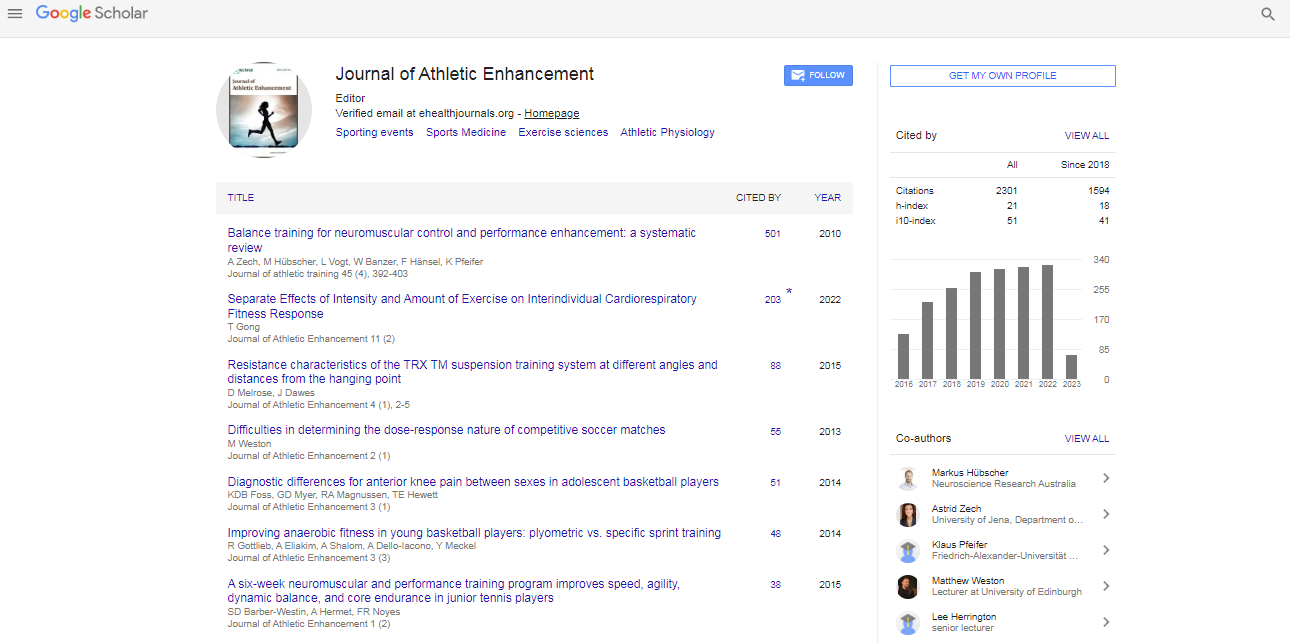Research Article, J Athl Enhanc Vol: 6 Issue: 3
Comparisons between Low-Intensity Resistance Training with Moderate Blood Flow Restriction and High-Intensity Resistance Training on Quadriceps Muscle Strength and Mass
Christopher Carroll*, Tyson Eckel BS and Gabriel Walker BS
Department of Biokinetics, Bethel University, Arden Hills, MN, USA
*Corresponding Author : Christopher Carroll
Department of Biokinetics, Bethel University, 3900 Bethel Drive, Arden Hills, MN, 55112, USA
E-mail: carchrk@bethel.edu
Received: February 28, 2017 Accepted: April 11, 2017 Published: April 17, 2017
Citation: Carroll C, Tyson Eckel BS, Gabriel Walker BS (2017) Comparisons between Low-Intensity Resistance Training with Moderate Blood Flow Restriction and High-Intensity Resistance Training on Quadriceps Muscle Strength and Mass. J Athl Enhanc 6:3. doi: 10.4172/2324-9080.1000257
Abstract
Objective: Elderly and rehabilitating populations who are unable to exercise under high loads are likely to experience muscle atrophy. Low intensity blood flow restriction training (LI-BFRT) can promote increases muscle mass comparable to conventional high-intensity resistance training (HI). However, strength discrepancies have been reported between LI-BFRT and HI programs. Therefore, the purpose of this study is to examine whether similar muscle strength and power improvements are found in both 1RM and non-specific strength tests between LI-BFRT and HI groups.
Methods: Six male subjects (x�? age 20.8 years ± 1.6) free of any musculoskeletal disorders with no anaerobic resistance training in the 6 weeks prior to testing participated in 4 week strength exercise program. Pre- and post- force and power tests were assessed using a 1RM test and a triaxial accelerometer (Myotest® SA) to measure power and velocity during a squat jump (SJ) and countermovement jump (CMJ). Subjects were randomly assigned one of two groups: LI-BFRT (40% 1RM at 40% arterial occlusion for 3 sets of 15 reps) or HI (80% 1RM for 3 sets of 8 reps). Both groups completed leg extensions twice a week for 4 weeks on a leg-extension machine.
Results: Significant increase in LI-BFRT for SJ power x�?= 42.2 W/ kg ± 3.6, SJ Power x�?= 45.7 W/kg ± 3.3; p=0.037, CMJ Velocity x�?= 245 cm/s ± 1.4, CMJ Velocity x�?= 269 cm/s ± 2.1; p=0.014 and 1RM x�?= 112.5kg ± 18.4, 1RM x�? =138.8kg ± 20.4; p=0.006.) was observed. No significant change was observed in the HI group.
Conclusion: The LI-BFRT subjects power output increased over the 4-week program. Improvements may be attributed to the neuromuscular adaptation that occurred through intervention. This pilot study suggests that BFRT could promote or increases muscle power comparable to results observed after conventional highintensity
(HI) resistance training, when measured via non-specific muscular strength tests.
 Spanish
Spanish  Chinese
Chinese  Russian
Russian  German
German  French
French  Japanese
Japanese  Portuguese
Portuguese  Hindi
Hindi 
